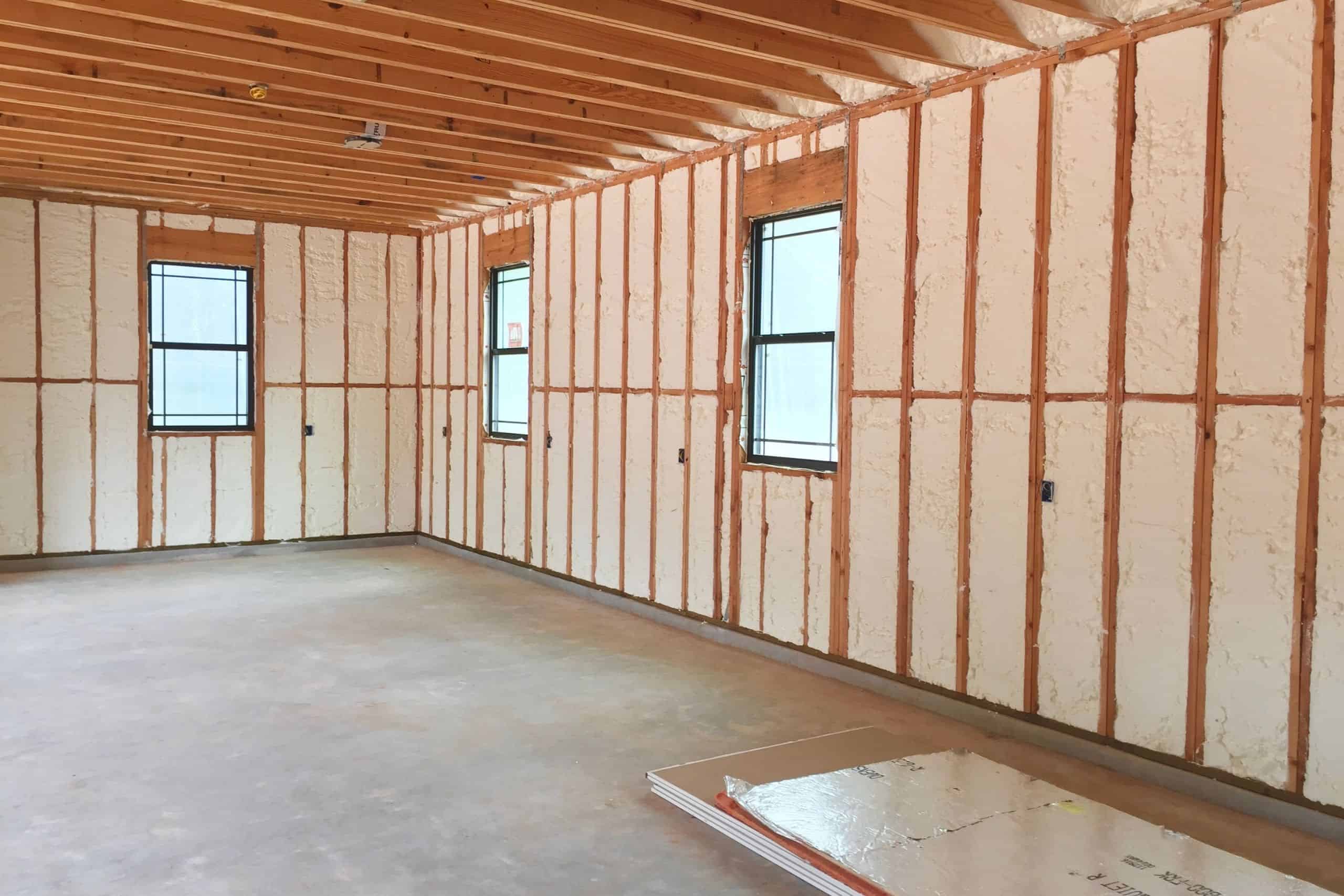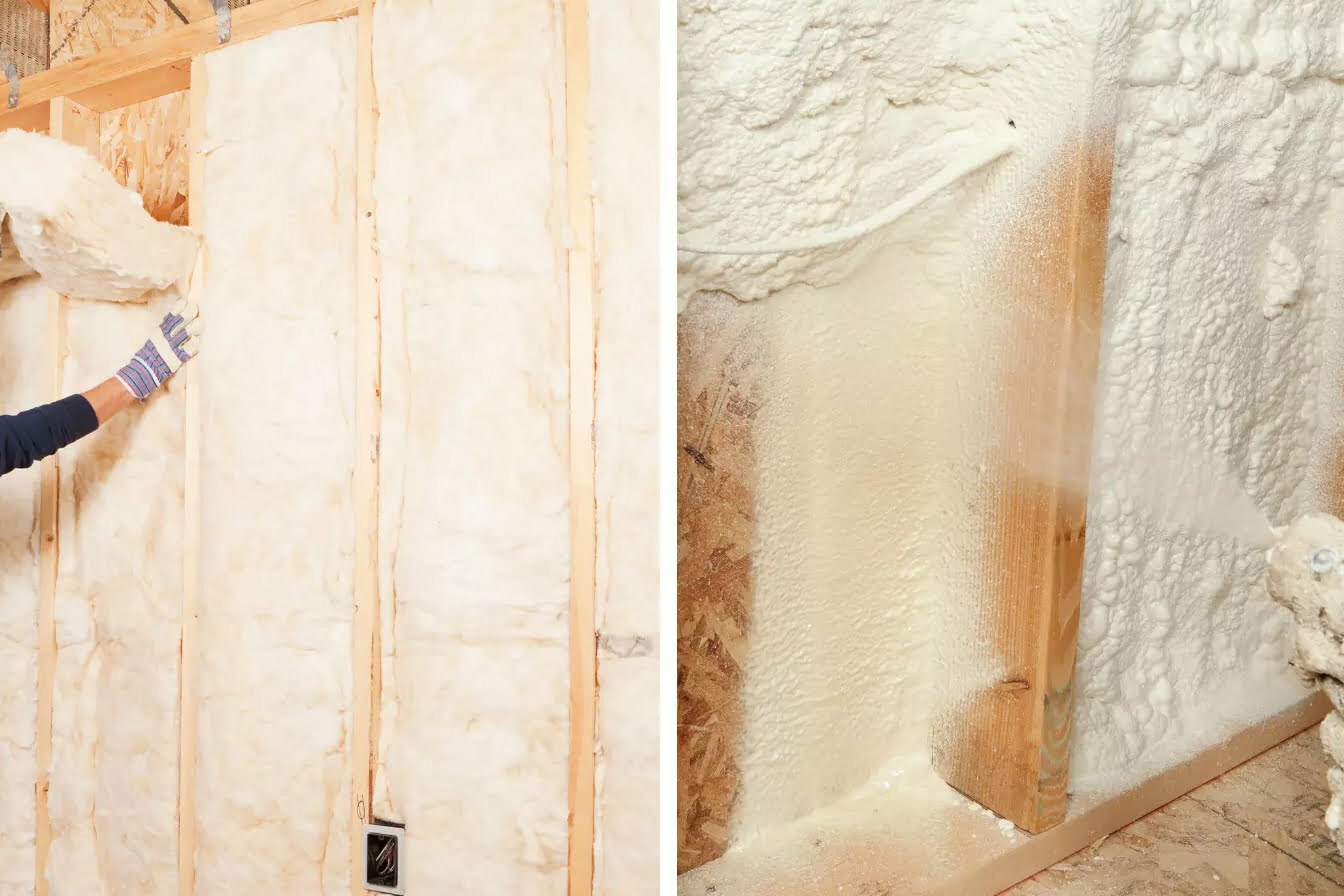Understanding the proper thickness for insulation can make a significant difference in energy efficiency, comfort, and overall cost. Spray foam insulation is a popular insulation type that can be installed with various thickness measures to ensure proper performance. Although a professional installer can determine the right insulation thickness for your space, it’s still important to understand how this property affects spray foam.
What is Spray Foam Insulation?
Spray foam insulation is a type of insulation that expands and hardens upon application. It is particularly popular for its high thermal resistance, airtight seal, and flexibility in filling spaces of various shapes and sizes. Essentially, spray foam serves as a protective barrier, maintaining comfortable indoor temperatures while preventing problems related to moisture and air infiltration.
There are two main types of spray foam: open-cell spray foam and closed-cell spray foam. Each offers unique advantages and is suitable for specific applications.
Understanding the Different Types of Spray Foam Insulation
Closed-cell spray foam is dense and offers a higher R-value (a measure of thermal resistance). Its compact structure provides a superior air and moisture barrier, making it an excellent choice for exterior applications or areas prone to water and storm damage.
Open-cell spray foam, on the other hand, is softer and less dense. It is perfect for interior applications, offering excellent thermal resistance and noise reduction benefits. However, it doesn’t provide the same level of moisture protection as closed-cell foam.
How Does Spray Foam Insulation Work?
Spray foam insulation works by creating a continuous, airtight seal that blocks heat transfer and air infiltration. It expands upon application, filling cracks, gaps, and voids in your home’s building envelope. This process helps to reduce the load on your HVAC system and maintain a comfortable, constant indoor temperature.
Calculating the Required Thickness of Spray Foam Insulation
The appropriate spray foam insulation thickness can significantly influence its effectiveness. This depends on various factors, such as the climate, the type of construction, and the type of heating and cooling system you have.
Factors to Consider When Determining Insulation Thickness
When selecting insulation thickness, there are several key factors to consider. A primary consideration is the climate where the home or building is located – insulation requirements tend to be higher in extremely cold or hot environments to help maintain indoor temperatures. The desired energy efficiency level for the building is also important – thicker insulation usually results in greater efficiency and energy savings, but there is a point of diminishing returns.
The type of insulation material used can also impact thickness, as some provide better insulation value per inch. Finally, cost is a practical consideration, as thicker insulation costs more to purchase and install. Balancing these factors allows the selection of an appropriate insulation thickness for the specific building and its performance goals. Proper insulation thickness contributes to energy efficiency, occupant comfort, moisture control, and noise reduction. As mentioned, a professional installer can determine the appropriate thickness for your application.
Installation and Safety Guidelines for Spray Foam Insulation
For best results and safety, hire a professional to install your spray foam insulation. Professionals understand the safety precautions and have the right equipment and training to handle the job efficiently.
Proper Preparation for Spray Foam Insulation Installation
Before the insulation is installed, clear the area of debris and personal items. Severe health risks can arise if spray foam is not handled properly, so it’s crucial to prepare the area adequately.
Dealing with Safety Concerns in Spray Foam Insulation Installation
During installation, proper ventilation and personal protective equipment (PPE) are essential. It’s important for the installer to avoid inhalation of the spray foam chemicals, which can cause respiratory issues.
After-installation Care and Maintenance
Once installed, spray foam insulation requires minimal maintenance. However, it’s a good idea to have it inspected routinely, especially after severe weather incidents, to check for any damage or areas that might require resealing.
Benefits of Optimal Spray Foam Insulation Thickness
Optimal spray foam insulation thickness brings numerous benefits, from enhanced energy efficiency to increased comfort and structural integrity. In the long term, getting your insulation right is a cost-effective investment. Here are the key advantages:
- Energy Efficiency: By creating an efficient air seal, spray foam insulation reduces the load on your HVAC system and thus your energy costs. The savings offset the initial cost of the insulation over time.
- Noise Reduction: With its noise-dampening properties, spray foam insulation contributes to a quieter indoor environment. An optimal insulation thickness can also better regulate indoor temperatures for more consistent and comfortable living conditions.
- Water Resistance: Closed-cell spray foam is highly resistant to moisture, making it a good choice for areas prone to water intrusion, such as basements and crawl spaces.
Look to Cincinnati RetroFoam for Your Insulation Needs
If you’re looking for an effective way to insulate your home, consider spray foam insulation. Its superior thermal resistance, ability to air seal, and various benefits make it an excellent choice. And when it comes to installation, there’s no better team for the job than Cincinnati RetroFoam.
Since 2015, Cincinnati RetroFoam has provided impeccable workmanship and service in the insulation industry that’s not found elsewhere. With years of experience, our team is dedicated to making homes and businesses more comfortable and energy-efficient. Whether you need spray foam, blown-in, or injection foam insulation, we’re here for you. Contact us today for your free estimate.


